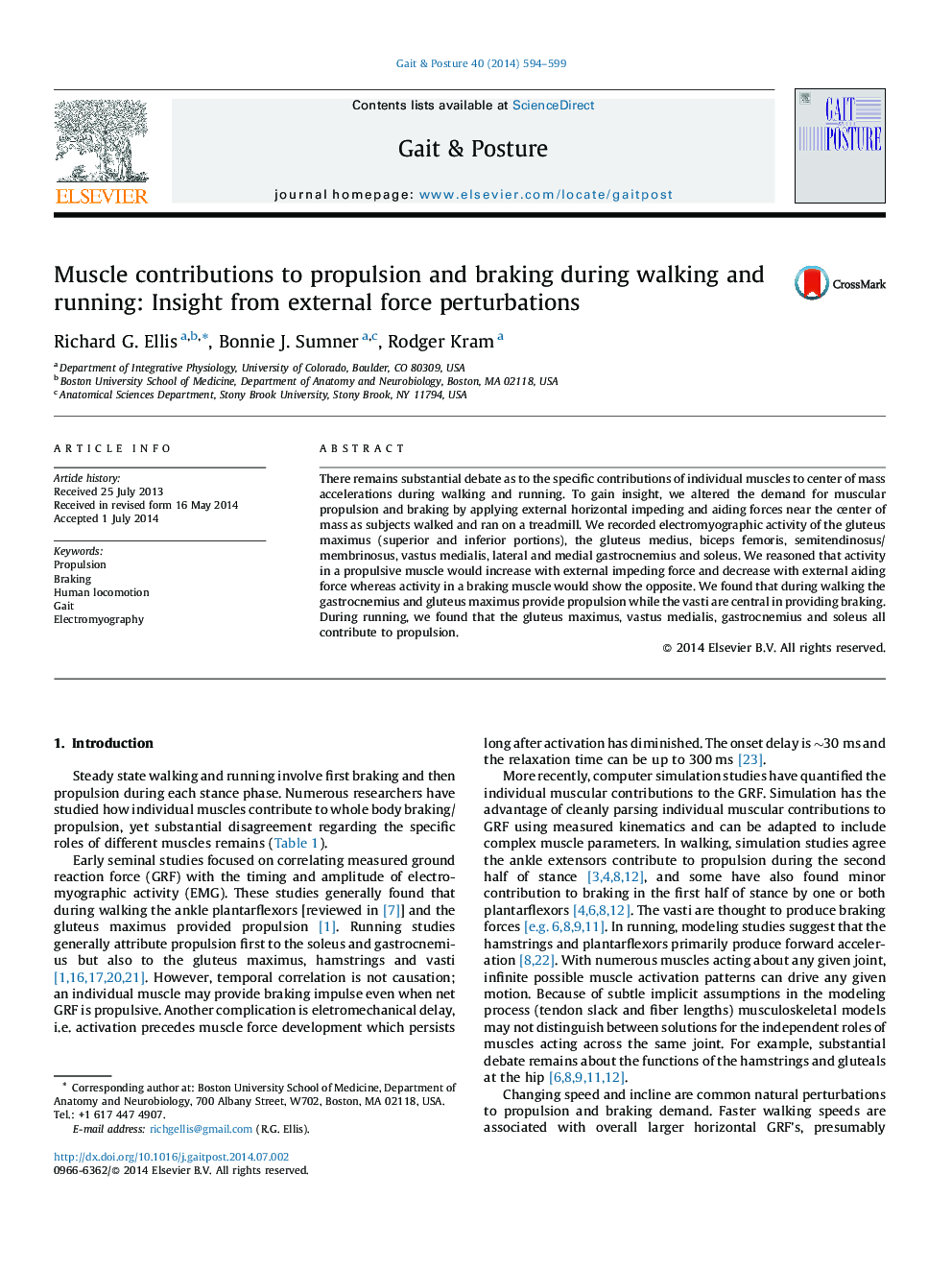| کد مقاله | کد نشریه | سال انتشار | مقاله انگلیسی | نسخه تمام متن |
|---|---|---|---|---|
| 6205944 | 1603853 | 2014 | 6 صفحه PDF | دانلود رایگان |
- We used horizontal forces to change the demand for muscular propulsion.
- We measured leg muscle EMG activity while subjects walked and ran.
- The gluteus maximus and gastrocnemius provide propulsion during walking.
- The vasti provides braking during walking.
- The gluteus maximus, vasti, gastrocnemius and soleus provide propulsion during running.
There remains substantial debate as to the specific contributions of individual muscles to center of mass accelerations during walking and running. To gain insight, we altered the demand for muscular propulsion and braking by applying external horizontal impeding and aiding forces near the center of mass as subjects walked and ran on a treadmill. We recorded electromyographic activity of the gluteus maximus (superior and inferior portions), the gluteus medius, biceps femoris, semitendinosus/membrinosus, vastus medialis, lateral and medial gastrocnemius and soleus. We reasoned that activity in a propulsive muscle would increase with external impeding force and decrease with external aiding force whereas activity in a braking muscle would show the opposite. We found that during walking the gastrocnemius and gluteus maximus provide propulsion while the vasti are central in providing braking. During running, we found that the gluteus maximus, vastus medialis, gastrocnemius and soleus all contribute to propulsion.
Journal: Gait & Posture - Volume 40, Issue 4, September 2014, Pages 594-599
